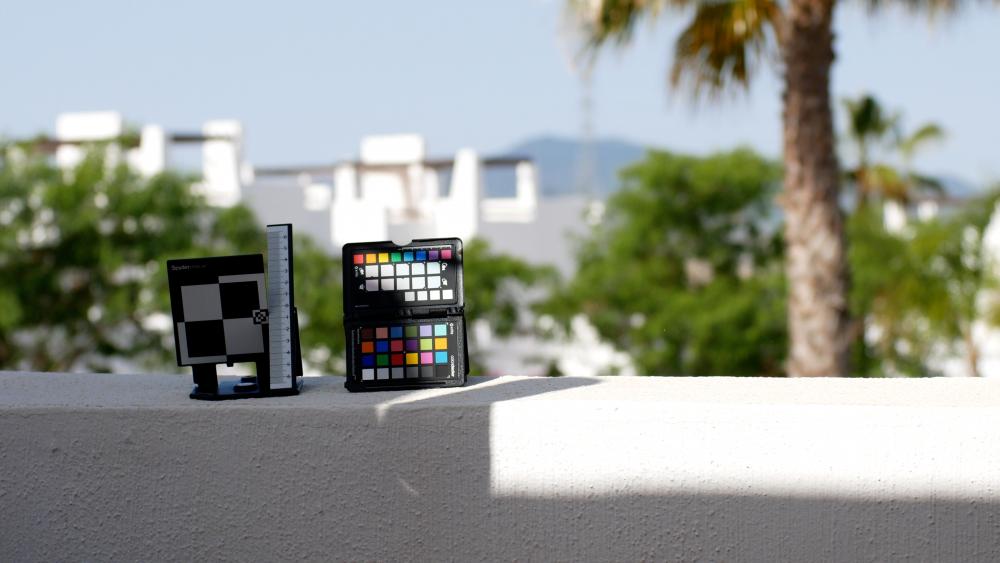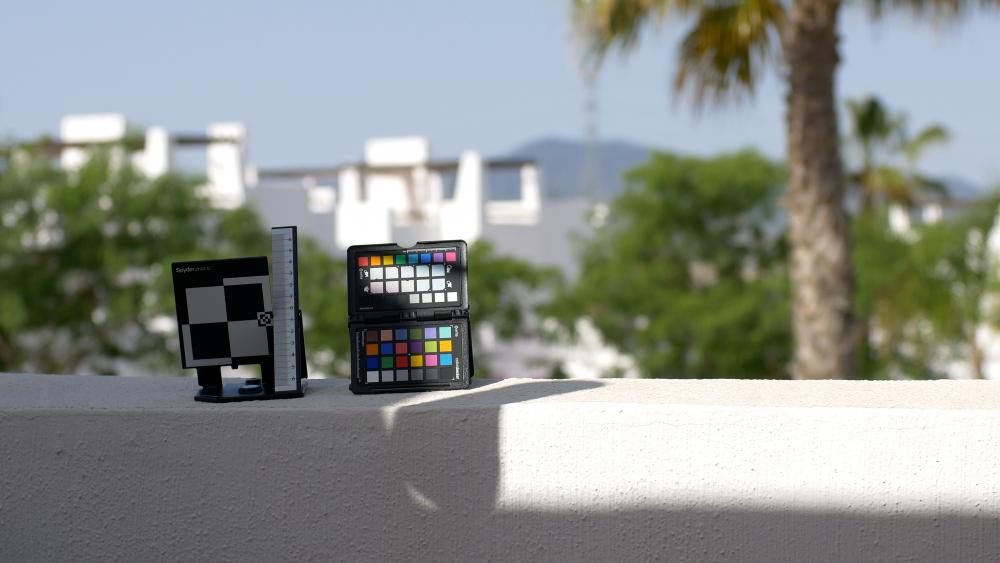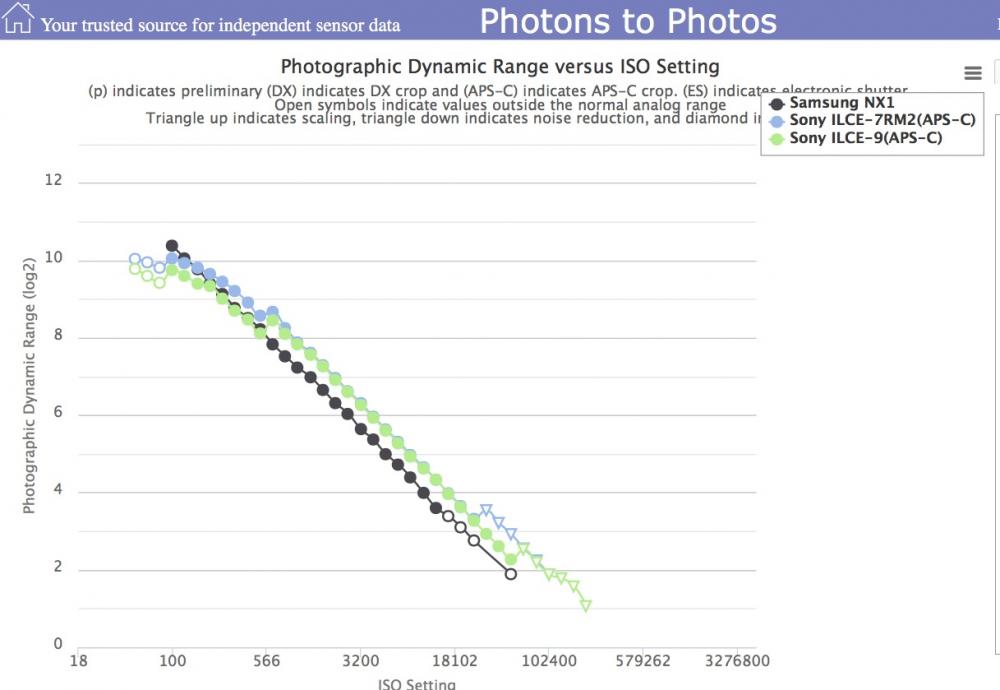Leaderboard
Popular Content
Showing content with the highest reputation on 11/27/2017 in all areas
-
@Mark Romero 2 Do not get me wrong, Rode has very good and competitive products, but in most cases they are a notch under what I would like, and usually I found it in Sennheiser products. I have and own other brands too, but in certain market gaps that Sennheiser doesn't have a product, or they are more expensive that I would like, or have the budget for. A great mic is the NTG3, I used it a lot for a few documentary series (because most of the production companies over here own a couple of those), but every time I was going back to my 416, I knew which one was better (at least for me, the NTG3 is a more forgiving microphone). My impression right now, is that the best, cheap, mic(s) for dSLR and mirrorless, right now, is the Sennheiser MKH440, it does more sense in 95% of the uses it is intended to. When I want the absolute cheapest, smallest, lightest, with not a lot of drain in battery, then I go to the micro. It is just brilliant that they built something like this. A) Micro B) 440 C) independent sound recording with pro mics and recorders, those are my user cases. As Max said, it doesn't get in your way. You can see through your EVF, it doesn't really add to the weight, it ain't so "phallic" and aggressive as others, and it is dead cheap! You can find it for even less, including the fur, and the Rycote Lyre system. EDIT: also it has the best design among all this Rode video mic series, and it doesn't need to turn it on/off, I have seen myriad times other Rode video mics to be off, when they should be on, and off, when they should be off! The rest of them are notoriously badly ergonomically built. Especially before the Rode adopted the Rycote Lyre system, they were a disaster to work with. Very bad battery placement, the rubber bands were silly and very bad implemented. I do not agree with some of Max's opinions though, the micro AIN'T that good acoustically and musically, if you like, most of the other microphones were a good bit better than that, the price difference isn't unsubstantial but for all the aforementioned, and the price, it is the best.4 points
-
Panasonic seems to be announcing something "BIG" on December 15
zetty and 2 others reacted to Mark Romero 2 for a topic
This is why I now just wear a pancake on my head for a hat...3 points -
Can we please just have DPAF. Please God that’s all I want lol2 points
-
At last, i bought used Voigtlander 17.5mm and 25mm, and shot a wedding with this two lens only on last Saturday. (except a few clips taken with 3rd cam 550D + Tokina 11-16mm). Absolutely love the Voigtlanders over Sigma 18-35. I decided to let go the Sigma 18-35mm. Even though it's sharper, but the images is flat, lack of the sense of space ....... yes, there's bokeh, but the subject is like flatten together with the bokeh background............ The wedding video i took with Voigtlanders: https://app.frame.io/f/08d54464-1d99-4b00-90b6-40720df62c3ez2 points
-
So, as some of you may know, I've been "experimenting" with having little chats with different Panasonic cameras over WiFi and after whispering in the GX80s ear last night, I may have come up with something quite interesting. The first image is a grab from a GX80 using its Standard profile. The second image is a grab from a GX80 that is definitely not using the Standard profile.......1 point
-
I'm generally of belief that they've taken their turn and are too stubborn to turn around and drive the other way again. They're going with their depth from de-focus system... which needs to hunt around in order to analyze the change in depth character, in turn telling the camera something about the focus, which just causes unnecessary mechanical and processing strain (at the cost of wear & tear, battery life, speed/smoothness, etc). If they could pull that off quick enough to not interfere with the actual recordings, that's one thing, but in my opinion it might just be one of the most inefficient ways to make an AF system operate ever to start with anyways, so to me it doesn't even make sense to pursue the mapping of lens characteristics to make depth and focus assumptions on, other than perhaps assisting an otherwise already existing system (and then I don't mean a constrast based one). But you know... concerning AF Panasonic seems to live in their own bubble. And the thing about bubbles... they float around and don't change a whole lot... the only thing it does is pop in due time...1 point
-

how much does it cost a low light iso camera?
Mark Romero 2 reacted to noone for a topic
A7s at ISO 6400 is very nice. The A7s at ISO 12800 has about the same DR as the Canon 7D does at ISO 1600 (RAW stills anyway). 120/100fps is only 750p on the first version A7s.1 point -
To be honest I am not watching most of Max's videos, Caleb's though, I like this guy and has a more "scientific" approach to things (at least a self-taught-improvisation-scientific approach). He seems to spend more time in his videos than Max. Also, I am using those mics in NX1, GH5, so cameras with ok pre amps (NX is surprisingly quite ok for recordings). Another note, the Micro is a cardioid mic. I much prefer such kind of mic for camera placement than a directional one, for a lot of reasons. For once, there is no lobe at the back of the microphone, so it will record just in front of it. Second, if you have a wide lens hand held, and go in front of someone, or two people speaking, you can have the conversation easily, and that is what you should aim, when you have 2 people speaking, if you are outside a tattoo shop in Brooklyn, and you go 200mm with your L lens, directionality doesn't mean a thing. Go 35mm, and go close, have someone else do the B camera with a tele lens (usually directors with no real experience do a lot of such mistakes). The atmosphere sound is more natural. Highly directive mics should be on a boom, really, with someone experienced do the work. Now, where my second proposal stands, the MKE440. The 440 is a stereo mic, but unlike Rode's stereo mics, that gather sound from everywhere, and I wouldn't recommend those on a camera, the 440 makes a cone (a sound gathering one) in front of the 2 mics forming the V shape, so you have a much bigger area covered, but still, because you have 2 directional capsules, more directional than cardioid, you have a lot of rejection of unwanted territory, in my opinion, the best of both worlds. The 440's cone resembles a 35mm lens by the way (officially, by Sennheiser engineers). 1 test): Look how small is the difference in gain (first measurement) between Micro vs all the rest, until the Video MicroPro (0db), that seems that we are not gaining much, until the +20db option of the much more expensive Pro, that means that Micro circuitry and amplification is quite good for such a small, light and cheap mic (cheap goes with everything, it is a standard that everything measures on). 2 test): This is what I meant before that Max was a bit exaggerating about the Micro (and, that is only a spec, I was talking also about tonality, musicality and other sound characteristics that are not objectively measured). Self noise is the holy grail of microphones, a small difference can bring huge differences in price, especially in our line of work. Here it is like the sensor on cameras (not always the case though), bigger microphone capsules, usually have less self noise. That is very important if you have a "whispering" actor, or if you are trying to do some good "room tone", or ambient recording. This is where super expensive Sennheiser mics (in Europe, they are 20% more expensive than US, for some reason! damn Sennheiser!) such as the 80X0 and X0 series shine, or good/expensive stereo mics perform the best. The cheapest of that second category is another Rode, the Stereo Video Mic X https://www.amazon.com/Rode-SVMX-Videomic-Broadcast-grade-Microphone/dp/B00O5B3KCU/ref=sr_1_3?s=electronics&ie=UTF8&qid=1511806267&sr=1-3&keywords=rode+mic+x with its half inch capsules (mind you, there are such mics with 1" capsules), and check that price please. Andrew here has a blog about this specific mic. Search on this site. 3 test): That doesn't say much, usually you cut the low end on the camera, or on a recorder. The most important thing is voice, and voice doesn't live down there, except if you are Nick Cave, but Nick Cave knows his s%^# about mics. Also, all the rumbling and low frequencies are more easily to ruin your sound than high ones (very low frequencies are transferred through materials, that is why you hear the train on the rails coming from miles away, or the low bass of racer boys, or a machine through a concrete building), that is usually we cut down low frequencies, especially if there is no sound man present, you just trying to survive sonically without a proper pro doing the job, you do not try to gather stellar sound, there is no way, just to stay on the surface. 4) Another reason old Canon sucks! My impression is Samsung has the best ones but I haven't test all the cameras, and when I do camera work, I am not that careful on sound, imagine people with not a lot of experience in sound, they do not even hear most of the times. I like Caleb, he is trying, effortlessly!1 point
-
Lenses
jonpais reacted to Digitaliant for a topic
This is my first post in this great forum. -------------------------------------------------------------------------------- Thanks Jon Pais, great colors, great and smooth outfocus zones. On my GX-80 it will be more a 35 mm F/1.4 field of view equivalent. I just bought it and I can't wait to receive it. Please, when you have some time can you compare it to the 12mm Leica F/1.4. I know that the field of view is different and it's like to compare apples with oranges but it would be great if you can say something on the distortions of both lenses. I tried the 12mm a while ago and I found it quite impressive in this sense and with really great colors and bokeh. In fact, it's still in my shopping list. Thanks1 point -
This guy made one similar comparison a year ago.1 point
-
Yes, yes, very pretty. Maybe post this stuff in the "Gear for Sale" forum and keep this one for everything else, okay?1 point
-
Which iMac 2017 for editing and grading?
jonpais reacted to Fredrik Lyhne for a topic
Long time no see? I finally got my 4.2GHz, 1TB SSD, 8GB VR. 40GB RAM iMac. It handles the GH5 10 bit files easily and I haven't had the need to transcode anything yet. Thanks guys for all your input, especially @joema and @jonpais1 point -
All good videos should have these. So like post number three from this thread?1 point
-

how much does it cost a low light iso camera?
TheRenaissanceMan reacted to IronFilm for a topic
Fuzzynormal, they're probably also shooting with all their lights off too and expecting a brightly lit scene to come out. The reality is even an old and cheap Nikon D5200 should do well enough in 90% of people's usual "lowlight" scenes if handled right.1 point -
a7S mk3 will not have all the GH5 specs/features but with a FF sensor. I'll eat my hat if it does.1 point
-
Every Rode Shotgun VideoMic Compared
Kisaha reacted to Mark Romero 2 for a topic
Thanks for the insight!!!1 point -
There are certain circumstances in which UHD @100 mbps is a problem: Slog. Even if you bravely try to ETTR all the time, in the real world and in situations of wide dynamic range you'll nonetheless sometimes capture the noise floor. Not necessarily shadows beneath car tires but for instance parts of faces that happened to be heavily backlit. This noise then clots together as macroblocks with banding. You could live with a little noise, but those areas ruin the recording, and you usually see them when it's too late. The GH2 once had all-intra hacks with absurdly high data rates (like 172 instead of 24 mbps), and the fans raved about the added detail. But there wasn't more detail. The hack just preserved all of the noise. The shadows looked more natural, and if there was too much noise, you could perfectly Neat it. A ProRes capture means less compression artifacts, so I wouldn't say it's completely useless. Would I want to schlep a recorder on top of my compact little camera? Definitely not. I try to expose better, and I accept around 5 % rejects where I failed.1 point
-
If 2x anamorph, then Luk filmed in the known Lumix 4 to 3 mode with 3328 x 2496px, the same like the GH4 and G7 4to3 video modes. Luks screegrab would then be 50% downsized in each width and height. The 2x anamorph image was then 6656 x 2496 pixels large and original captured image was 3328x2496 px, giving us a 4to3 ratio, the same as on the GH4 and G7 4to3 mode for anamorphic shooting. If we keep the sensor heigth with a pixel count of 2496 and expand width for 16 to 9 ratio, it would give us a sensor with about 4438 x 2496 pixels. So it could be a sensor with 4438 x 2496 pixels in 16:9 ratio, my bet in S35 size.1 point
-
Wow! I can see 2 NX1 cameras there, I thought they had vanished from this dimension (the Trump one, where the world goes to hell!) My favorite is the Micro, it is the only Rode mic I ever owned! All the rest, I would rather use something else.1 point
-
“The Middle Path”: A Lumix GH5s Short
Orangenz reacted to Fritz Pierre for a topic
Yes...but they also weigh 20+ lbs, so you have the weight on your shoulder to keep things steady for handheld...IBIS effectively turns the GH5 into a 20lb camera without the weight...as for image degradation, early concerns expressed were that the IBIS would cause excessive heat which makes the sensor noisy...heat is clearly not a problem for the GH5 series...I've not read any thread that claims to decernably prove that IBIS degrades the image on either the GH, G or GX camera series.1 point -
1 point
-

Am I the only one finding it hard to ignore the JVC LS300?
EthanAlexander reacted to aldolega for a topic
Yup. I think the main reason the LS300 didn't take off was simply due to JVC not being taken seriously in this space. Their pro rep is solidly in broadcast, and even their consumer camcorders were never anything special. So people looking for an affordable large-sensor camera from above or below just don't have JVC as a contender in their minds. Panasonic doing the APS-C sensor + m4/3 mount would have turned a lot of heads. Especially if they had included a nice solid m43-EF adapter that had the option of bolting to the camera body, for those who would just want to run the camera as strictly an EF mount. Maybe in a year or two they'll figure this out, and a new camera can slot into the wide space between the GH5 and the EVA.1 point -
Am I the only one finding it hard to ignore the JVC LS300?
EthanAlexander reacted to Fritz Pierre for a topic
Unrelated to this thread, but the LS300 mount is where Panasonic completely missed the boat with the EVA1.1 point -

The cameras used on Netflix's Original Films and Series
Mark Romero 2 reacted to IronFilm for a topic
A back of steel! Blames the lawyers is my bet.1 point -
Hi to All, I wrote a script to fast enable/disable Cinelike for gx80-85 in IOS (iphone or Ipad) Link for script https://workflow.is/workflows/ee3e045edbea4a79bec648e31e7d2a07 (Download Workflow App before) In attachment a Video Tutorial to use it I hope can be useful AD84C80E-8445-4169-BB78-633CB561CE69.MP4 or link https://drive.google.com/open?id=0B6F1iXrslVvha0dXMXdPU0hhLW81 point
-
Which iMac 2017 for editing and grading?
Jimmy G reacted to Richard Bugg for a topic
This bloke shows how he bought a mid-tier 2017 iMac, pulled the screen off then replaced the CPU with an Intel i7, added an SSD and 64GB RAM to apparently achieve faster performance than any other 2017 iMac. Perhaps this is the type of hybrid Hackintosh that makes most sense for the DIY handyman.1 point -
Just keep in mind the 2017 iMac 27 i7 is twice as fast as a 2016 MBP or 2015 iMac 27 ONLY on *some* things -- specifically transcoding H264 to ProRes proxy. Considering that's a very time-consuming part of many H264 4k workflows, that's really useful. It's also limited to FCPX; the performance difference varies with each software. The 2017 iMac 27 i7 is also about 2x as fast (vs a 2015 iMac i7 or a 2016 MBP i7) on the GPU-oriented BruceX benchmark, but this is also a narrow task. On other GPU-heavy or mixed CPU/GPU tasks like Neat Video, it's usefully faster but not 2x faster. On a few H264 long GOP 4k codecs I tested, the 2017 iMac 27 i7 seems marginally fast enough to edit single-camera 4k material without transcoding (on FCPX), which is a big improvement from the 2015 iMac 27 i7 or 2016 top-spec MBP. However multicam still requires transcoding to proxy, and if you want to really blitz through the material, then proxy still helps. If you now or will ever use ProRes or DNxHD acquisition, this picture totally changes. It then becomes less CPU intensive but much more I/O intensive. You usually don't need to transcode in those cases but the data volume and I/O rates increase by 6x, 8x or more.1 point
-
I have a 2013 iMac 27 with 3TB FD, a 2015 top-spec iMac 27 with 1TB SSD, 2015 and 2016 top-spec MBP 15s and am testing a 12-core nMP with D700s. This is FCPX 4k documentary editing where the primary codecs are some variant of H264. Even though FCPX is very efficient, in general H264 4k requires transcoding to proxy for smooth, fluid editing and skimming -- even on a top-spec 12-core nMP. If you have a top-spec MBP, iMac or Mac Pro, smaller 4k H264 projects can be done using the camera-native codec, but multicam can be laggy and frustrating. The Mac Pro is especially handicapped on H264 since the Xeon CPU does not have Quick Sync. In my tests, transcoding 4k H264 to ProRes proxy on a 12-core Mac Pro is nearly twice as slow as a 2015 top-spec iMac 27. For short projects with lower shooting ratios it's not an issue but for larger projects with high shooting ratios it's a major problem. We've got ProRes HDMI recorders but strapping on a bunch of 4k recorders is expensive and operationally more complex in a field documentary situation. That would eliminate the transcoding and editing performance problems but would exacerbate the data wrangling task by about 8x. This is especially difficult for multi-day field shoots where the data must be offloaded and backed up. However in part the viability of editing camera-native 4k depends on your preferences. If you do mainly single-cam work, and use modest shooting ratios so you don't need to skim and keyword a ton of material, and don't mind a bit of lag during edit, a top-spec iMac 27 is probably OK for H264 4k. Re effects, those can either be CPU-bound or GPU-bound, or a combination of both. Some like Neat Video allow you to configure the split between CPU and GPU. But in general effects use a lot of GPU, and like encode/decode, are slowed down by 4k since it's 4x the data per frame as 1080p. Re Fusion Drive vs SSD, for a while I had both 2013 and 2015 iMac 27s on my desk, one with 3TB FD and the other 1TB SSD. I tested a few small cases with all media on the boot drive, and really couldn't see much FCPX real-world performance difference. You are usually waiting on CPU or GPU. However if you transcode to ProRes, I/O rates skyrocket, making it more likely to hit an I/O constraint. Fusion Drive is pretty good but ideally you don't want media on the boot drive. SSD is fast enough to put media there but it's not big enough. Fusion Drive is big enough but may not be fast enough, thus the dilemma. A 3TB FD is actually a pretty good solution for small scale 1080p video editing, but 4k (even H264) chews through space rapidly. Also, performance will degrade on any spinning drive (even FD) as it fills up. Thus you don't really have 3TB at full performance, but need to maintain considerable slack space. In general we often under-estimate our storage needs, so end up using external storage even for "smaller" projects. If this is your likely destiny, why not use an SSD iMac which is at least a bit faster at a few things like booting? Just don't spend your entire budget on an SSD machine then use a slow, cheap bus-powered USB drive. If I was getting an 2017 iMac 27 for H264 4k editing, it would be a high-spec version, e.g, 4.2Ghz i7, 32GB RAM, 580 GPU, and probably 1TB SSD. Re the iMac Pro, what little we know indicates the base model will be considerably faster than the top-spec iMac 27 -- it has double the cores (albeit at slower clock rate) and roughly double the GPU performance. However unless Apple pulls a miracle out of their hat and upgrades FCPX to use AMD's VCE coding engine, the iMac Pro will not have Quick Sync, so it will be handicapped just like the current Mac Pro for that workflow. Apple is limited by what Intel provides but this is an increasingly critical situation for productions using H264 or H265 acquisition codecs and high shooting ratios.1 point
-

My guide to buying a cheap Hasselblad medium format camera
Mattias Burling reacted to jcs for a topic
The reason we try to take the tester's ego out of an experiment, is to reduce as many variables as possible in order to learn whatever the goal of the experiment is. For a camera test, our goal is to understand actual differences in the camera systems, vs. the tester's personal preference or bias (ego). This has nothing to do with computers, as human beings would then look at the results of the tests to see if they can see any differences and if so, what are those differences. That sounds reasonable. A non-biased equivalence test would allow many people to reach their own conclusions. And Andrew has all the gear and experience to create a reasonable equivalence test showing the differences between these camera systems.-1 points













